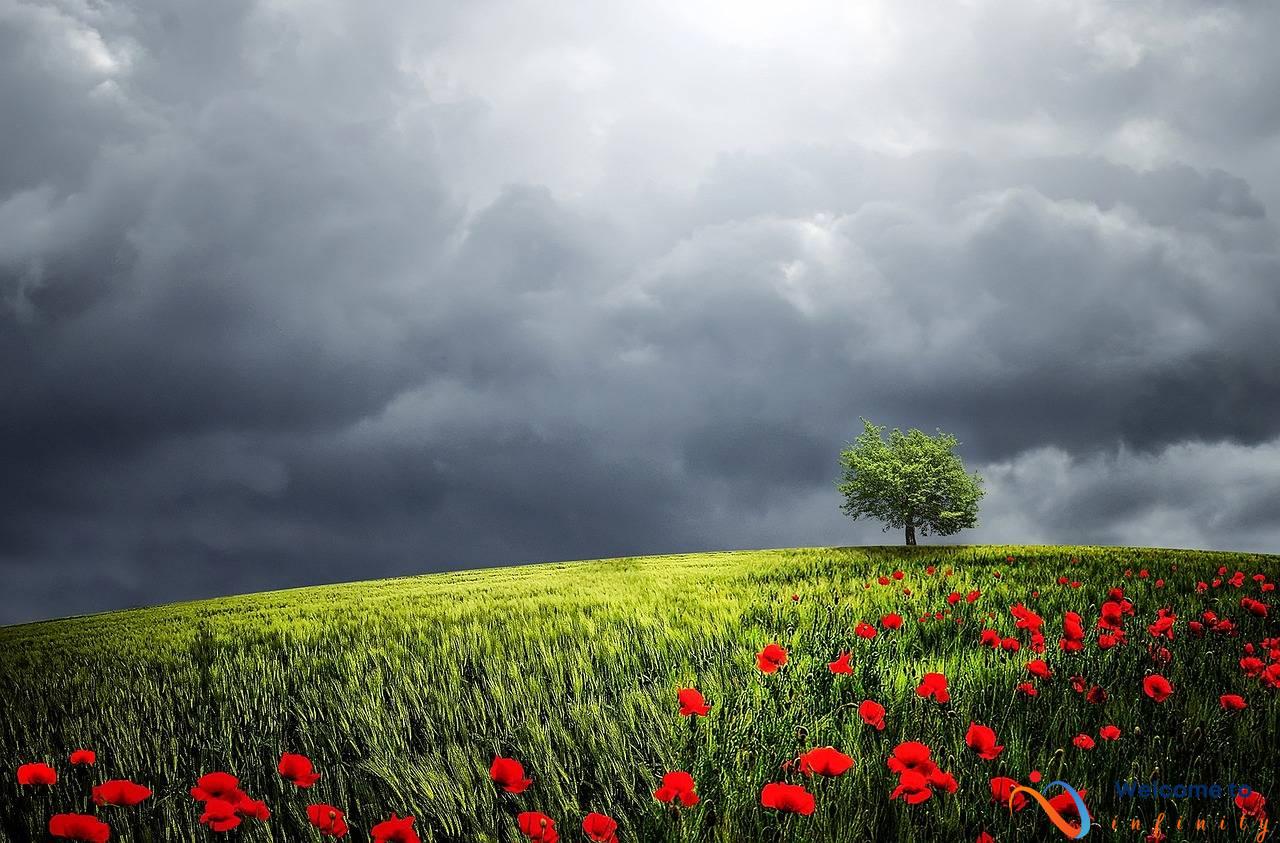Flower arranging is an art, and with the right tips and tricks, you can create beautiful floral compositions that look like they were made by a professional. There are several factors to consider when arranging flowers, including the colors, types of flowers, and the techniques used to put everything together. Whether you're planning to create a stunning centerpiece for your dining table or want to decorate your office with a beautiful flower arrangement, these tips will help you create something amazing.
One of the key factors in creating a visually pleasing floral composition is understanding color combinations. Colors evoke certain emotions and can create a specific mood. Warm colors like red, orange, and yellow are energetic and stimulating, while cool colors like blue, green, and purple are calming and soothing. By understanding the psychology of color in floral design, you can create arrangements that elicit the desired emotional response.
Choosing the right flowers and foliage is also essential when arranging flowers. It's important to consider the size, shape, and texture of the flowers and foliage you use. Different types of flowers can create different effects. For example, long-stemmed flowers like roses can create a more elegant and formal arrangement, while shorter, bushier flowers like mums can create a more casual and relaxed look.
When it comes to arranging flowers, having the right tools and techniques can make all the difference. Choosing the right vase or container is important, as it can help create balance and proportion in your arrangement. It's also important to properly prepare and condition your flowers before arranging them to help extend their longevity.
- Choose color combinations that evoke the desired emotional response
- Select flowers and foliage based on size, shape, and texture
- Use the right tools and techniques to create balance and proportion
By following these tips and tricks for arranging flowers, you can create stunning compositions that are sure to impress. Whether you're a beginner or an experienced florist, there's always something new to learn when it comes to the art of floral arranging.
Understanding Color Combinations
If you are looking to create beautiful and visually stunning flower arrangements, it is essential to understand the psychology of color in floral design. Color is a key element that can greatly enhance the aesthetic appeal of your arrangement. Understanding the different color combinations and the emotions they evoke can help you create a more harmonious and balanced floral composition.
One of the most basic color combinations is complementary colors. These are colors that are located opposite each other on the color wheel, such as red and green, yellow and purple, or blue and orange. Pairing complementary colors in a floral arrangement can create a vibrant and striking visual contrast that will capture the attention of anyone who sees it.
Analogous colors are another color combination that can create a more soothing and calm effect. Analogous colors are located close to each other on the color wheel, such as green and blue or yellow and orange. To create a more harmonious and peaceful floral composition, consider using analogous colors in your arrangement.
- Monochromatic color schemes can also be used in floral design to create a more elegant and sophisticated look. Monochromatic colors are different shades and tints of the same color, such as light pink, medium pink, and dark pink. Using monochromatic colors will create a more cohesive and subtle color combination in your floral arrangement.
It is essential to take into account the emotions and feelings associated with each color when creating a flower arrangement. For example, red roses are often associated with love and passion, while purple flowers symbolize elegance and sophistication. Understanding the emotional impact of each color can help you create a more meaningful and personal floral composition.
By keeping these tips and tricks of color combination in mind while arranging flowers, you can create stunning and visually appealing floral compositions that will leave a lasting impression on anyone who sees them.
Choosing the Right Flowers and Foliage
Choosing the right flowers and foliage is essential in creating a visually stunning and balanced arrangement. When selecting flowers, consider the size of the blooms and how they will fill the space. For example, large blooms like peonies work well as a focal point, while smaller blooms like baby's breath are great as fillers. In addition, incorporating flowers with different textures can add depth and visual interest.
When selecting foliage, consider the shape and size of the leaves. Ferns and eucalyptus can add a soft and wispy feel to an arrangement, while palms and tropical leaves can add a bold and dramatic look. Filler greens like leather fern and Israeli ruscus can also add texture and fill in any gaps.
- Size: Choose flowers and foliage that fit the size of your vase or container.
- Shape: Consider the shape of the flower or foliage and how it works with the overall design.
- Texture: Incorporating flowers and leaves with different textures can add depth and interest.
When placing the flowers and foliage in the vase, start by placing the larger blooms first as a focal point, then add the smaller blooms and foliage around it. This will create a more natural and organic look. Remember to step back and assess the overall arrangement, adjusting as needed to create balance and proportion.
Overall, selecting the right flowers and foliage is key to creating a beautiful and stunning floral arrangement. By considering size, shape, and texture, you can create a well-balanced and visually pleasing composition.
Tools and Techniques for Arranging
Arranging flowers is an art form that requires skill and creativity. While a lot of attention is given to selecting the right flowers, equally important are the tools and techniques used to create the arrangement. Here are some expert tips on the necessary tools and techniques needed to create stunning floral arrangements:
1. Cutting Tools: A sharp pair of scissors or a floral knife is essential for cutting stems at an angle, which allows them to absorb water more efficiently. It's important to keep the cutting tools clean and sharp to prevent damaging the stems.
2. Floral Foam: Also known as Oasis, this absorbent foam is often used as a base for arranging flowers. It can be cut to fit any container and can hold flowers in place while providing them with water.
3. Floral Wire: This thin, flexible wire is used to keep flowers and greenery in place. It's often used in floral crowns and boutonnieres, but can also be used to create unique shapes and structures in arrangements.
4. Floral Tape: This tape is used to secure stems and wire in an arrangement. It comes in different colors and can be used to camouflage wire and tape.
5. Techniques: Creating a stunning floral arrangement requires more than just placing flowers in a vase. Techniques like layering flowers and foliage, using odd numbers of stems, and mixing colors and textures can all enhance an arrangement.
Remember to always keep your tools clean and organized, and have fun experimenting with different styles and techniques. With the right tools and techniques, you can create beautiful and unique floral arrangements that are sure to impress.
Vases and Containers
Vases and containers play a crucial role in floral arrangements and can greatly enhance the overall composition of your design. When selecting a vase or container, it's important to consider the size and shape of your flowers, as well as the desired style of your arrangement.
For a more traditional look, consider using a classic vase made of glass or ceramic. These vases typically have a wider base and narrow top, which helps support the weight of larger blooms and provides stability to the arrangement. To add a more modern touch, try using unique vessels such as teapots, baskets, or even upcycled containers like mason jars or tin cans.
When choosing a container, also consider the color and texture of the vessel. Neutral colors like white or clear glass can help the flowers pop and become the focal point of the arrangement. Alternatively, a colorful or textured vase can add depth and dimension to the design.
Finally, don't be afraid to get creative with your containers! Consider using unexpected objects like watering cans or vintage bottles to add a unique touch to your floral arrangement. With the right vase or container, your flowers will truly shine!
- Consider the size and shape of your flowers when selecting a vase or container
- Classic vases made of glass or ceramic provide stability for larger blooms
- Unique vessels such as teapots or baskets can add a modern touch
- Neutral colors like white or clear glass can make the flowers pop
- Colorful or textured vases can add depth and dimension to the design
- Get creative and consider using unexpected objects as containers
The Importance of Proportion
When it comes to flower arranging, understanding proportion is one of the most important skills to master. Proportion involves choosing the right size vase or container for your flowers and creating balance in your arrangement.
Choosing the right vase or container for your flowers is crucial to achieving the proper proportion. The size of the container should be proportional to the size of the flower stems and the overall size of the arrangement. For example, if you have a tall vase, you'll need longer stem flowers to fill it and create balance. On the other hand, a smaller vase would require shorter stems and smaller blooms.
Creating balance in your arrangement is also essential when it comes to proportion. A well-balanced arrangement should have an equal amount of visual weight on both sides. This can be achieved by placing larger flowers in the center and smaller blooms around it. Alternatively, you could use different flower types and sizes to create a balanced look.
To ensure your arrangement has proper proportion, you can use the rule of thirds. This rule involves dividing your vase or container into three equal sections and placing flowers in each section to create a visually balanced arrangement.
Remember, proper proportion is crucial for a stunning floral arrangement. By choosing the right size vase or container and creating balance in your arrangement, you'll be able to create a visually pleasing and impressive display.
Flower Preparation and Conditioning
Flower preparation and conditioning are crucial steps when creating beautiful flower arrangements. Properly preparing your flowers before arranging can extend their longevity and keep them looking fresh and vibrant for longer. Here are some tips to keep in mind:
- Cut stems at an angle to allow for better water intake
- Remove leaves and foliage that will be below the waterline to prevent bacteria growth
- Place flowers in water immediately after cutting to prevent air bubbles from forming in the stem
Additionally, conditioning flowers can help them last longer and stay healthy. Conditioning involves essentially giving your flowers a “spa treatment” before arranging them. Here are some steps to follow:
- Mix flower food with room temperature water and fill a clean vase with the mixture
- Recut stems at an angle under water to prevent air bubbles from forming
- Place flowers in the vase and let them sit in a cool, dark place for a few hours or overnight
By following these preparation and conditioning tips, your flowers will be ready for arranging and will last for a longer period of time. Don't skip these important steps – they can make all the difference in the outcome of your floral arrangement.
Arranging with Different Styles
Arranging flowers is a beautiful art form, and understanding the different styles of floral arrangements will help you create stunning compositions. Three common styles of floral arrangement are line, mass, and form.
Line arrangements emphasize the shape and form of flowers and draw the viewer's eye along a line. This style is achieved by using tall flowers like gladioli and delphiniums, and arranging them in a graduated height to create a sloping line. This arrangement works well for tall spaces and to guide the viewer's eye in a specific direction.
Mass arrangements focus on one type of flower or color, creating a bold impact. This style is achieved by using a large quantity of one flower type, often in a single color, and arranging them in a tight cluster. This approach works well for a modern aesthetic and is often used in minimalist design.
Form arrangements create a specific shape or design, often with a mix of flower types and sizes. This style requires some level of technique and creativity and can range from a geometric shape to a natural form. The use of different textures and colors plays a crucial role in creating a striking form arrangement.
When arranging with different styles, consider the vessel you are using, as it will also impact the overall look and feel of the arrangement. Whether choosing a vase or other container, it should complement the style and size of the flowers. It is essential to balance the size of the flowers and the vessel. A larger vessel requires more flowers to fill the space while a smaller vessel works best with fewer flowers.
In summary, each style of floral arrangement offers a unique approach to creating a beautiful composition. Understanding how to achieve the line, mass, and form styles will enable you to create arrangements that are both visually pleasing and unique. A well-chosen vessel, coupled with the right flowers and techniques, will elevate your arrangement and create a lasting impression.
Final Touches and Presentation
After putting in all the effort into creating a beautiful flower arrangement, it's important to add the final touches to make it truly shine. One essential step is trimming the stems of your flowers to ensure they are all the same length and fit perfectly in your chosen vase or container. Use a sharp pair of scissors or pruners and cut at a 45-degree angle to allow for optimal water absorption.
Next, consider adding finishing touches such as decorative ribbons, twine, or even small ornaments or figurines that complement the theme of your arrangement. For a more natural look, add moss or other foliage around the base of the stems.
When presenting your arrangement, keep in mind the overall aesthetic and choose a location that allows it to be the center of attention. A well-lit spot is ideal to highlight the colors and textures of your flowers. Consider placing it on a decorative table runner or cloth and pair with complementary home decor items such as candles or vases.
If your arrangement is intended as a gift, don't forget to add a personal touch such as a heartfelt note or small trinket.
Remember, the final touches and presentation can make all the difference in creating a stunning flower arrangement. Be creative, experiment with different elements, and always aim to make your creation a true work of art.











